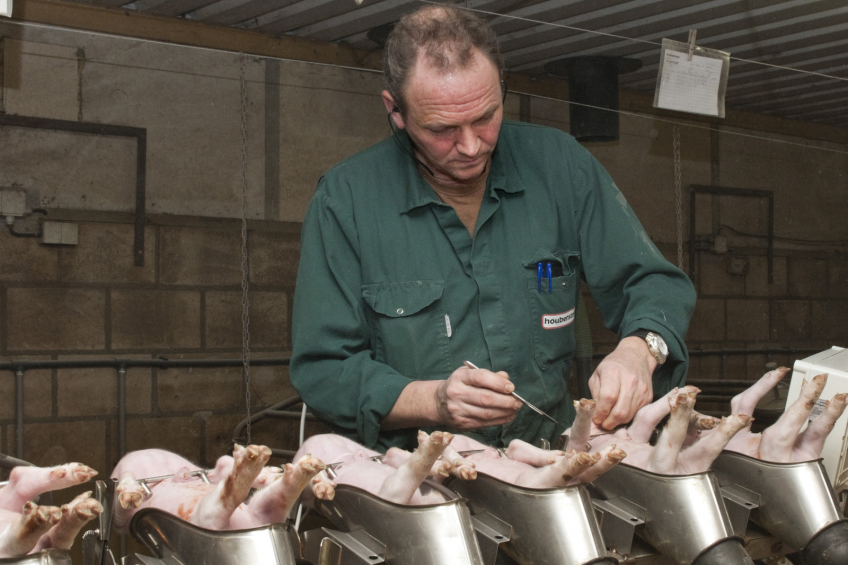‘Not castrating organic pigs not economically viable’

No matter which scenario you follow, the production of organic non-castrated male pigs is less economically viable than a similar organic pig production where the males have been castrated, according to calculations by scientists at Aarhus University in Denmark.
Castration of male piglets is an operation that either hurts the pig or requires an expensive anaesthetic and extra work by the farmer. The reason why male pigs are castrated anyway is that meat from non-castrated males (boars) can develop a very unpleasant smell when it is cooked.
Reduce boar taint in boars
In the organic pig production the ambition is to avoid castration. Scientists from Aarhus University have previously shown that it is possible to reduce boar taint in boars and produce entire male slaughter pigs in organic pig production without animal welfare problems. They have now carried out calculations of the economic viability of a production of boars. The results have been published in a report by DCA – Danish Centre for Food and Agriculture. The report is not very heartening of you have ambitions to spare the pigs the castration and also maintain your income in an organic production of finishing pigs. The reason for the poorer economy of a production without castration is that too many pigs have to be discarded at slaughter due to boar taint. This is despite the boars having a better feed efficiency and leaner meat than their castrated pen pals.
Two compounds taint the meat
The boar taint in the cooked meat is due, among other things, to the presence of the compounds skatole and androstenone, which boars develop. The research project NO CAST, which received funding from the Green Development and Demonstration Programme, showed that feeding boars dried chicory root or grain four days before slaughter could significantly reduce the concentration of skatole. Experiments have also shown that the slaughter of boars at a lower weight can reduce the concentration of the hormone androstenone. The question is what the economy looks like if you do not castrate the pigs and feed them either cereal or chicory and slaughter them at a lower weight.
Large cull
The calculations showed that producing castrated finishing pigs with a final weight of 86 kg (barrows) gave a gross margin of €47,19 per pig produced and €158 per allocated pen space per year. A production of pigs of equivalent weight at slaughter but not castrated gave a gross margin per pig of €24,31 and €81,38 per unit space. The markedly lower gross margin is because 20.9% of the non-castrated pigs had to be culled because of boar taint. To avoid boar taint you can, as previously mentioned, feed the pigs either chicory or grain in the diet in last few days before slaughter and slaughter them at a lower weight, in this case at 61 kg. Feeding grain to the pigs reduced the cull to 12.2% and feeding chicory reduced the cull to 8.6%. This was not sufficient to achieve the same gross margin as a production of organic barrows. The castrates had a poorer feed efficiency and thus higher feeding costs and a poorer lean meat percentage than non-castrated pigs, but since 99% of the castrates passed the boar taint test, this production form gave the best economy.
Source: DCA – Danish Centre for Food and Agriculture
Join 18,000+ subscribers
Subscribe to our newsletter to stay updated about all the need-to-know content in the pigsector, three times a week. Beheer
Beheer










 WP Admin
WP Admin  Bewerk bericht
Bewerk bericht